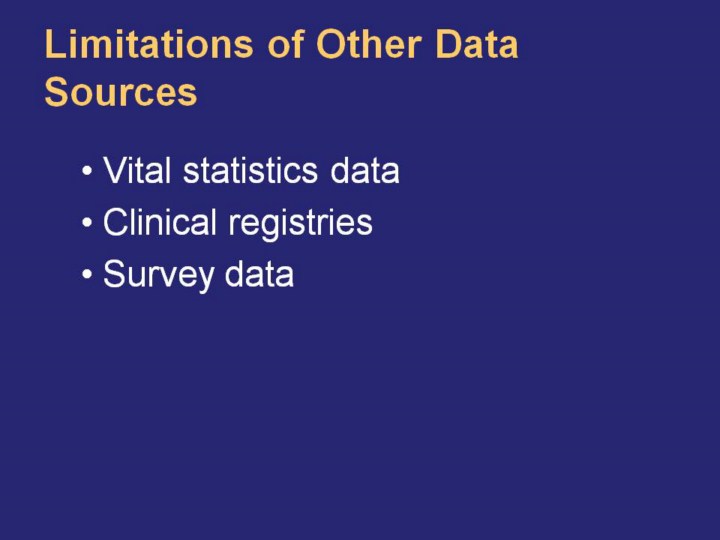| front |1 |2 |3 |4 |5 |6 |7 |8 |9 |10 |11 |12 |13 |14 |15 |16 |17 |18 |19 |20 |21 |22 |23 |24 |25 |review |
 |
Limitations of other data sources are as follows:
Vital statistics data: These data cannot be used to monitor diseases with low case-mortality rates like arthritis. As well, cause of death is rarely attributed to a chronic disease itself, but rather to complications that arise from having the disease. Vital statistics data are not always a timely source of information on disease prevalence because of potentially long lag times between changes in the population prevalence of a disease and its detection using mortality data.
Disease-specific clinical registries: While clinical registries can usually provide accurate estimates of disease prevalence, they are expensive and time-consuming to establish and maintain, and are being subjected to increased scrutiny under current health privacy legislation. As well, registries which are specific to particular geographic areas, clinical groups, or facilities do not provide estimates of incidence or prevalence that can be generalized to larger populations.
Survey data: population-based health surveys, another well-established source of chronic disease data, may suffer from non-response bias, which can result in inaccurate estimates of incidence and prevalence. Longitudinal survey data, which are useful for estimating disease incidence, often suffer from bias due to participant attrition. |